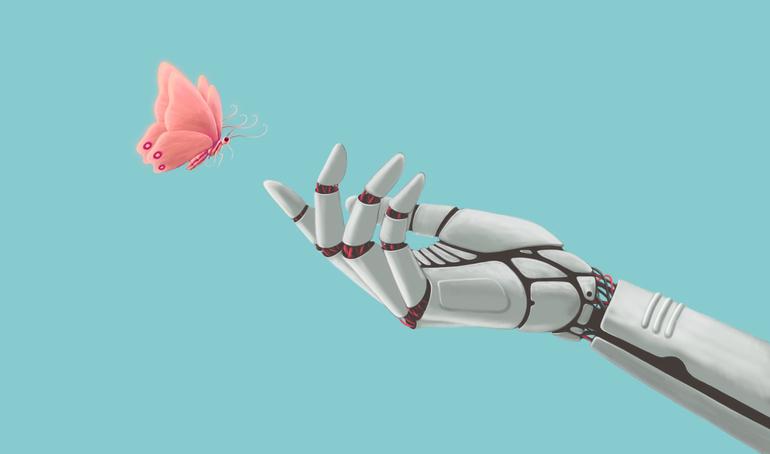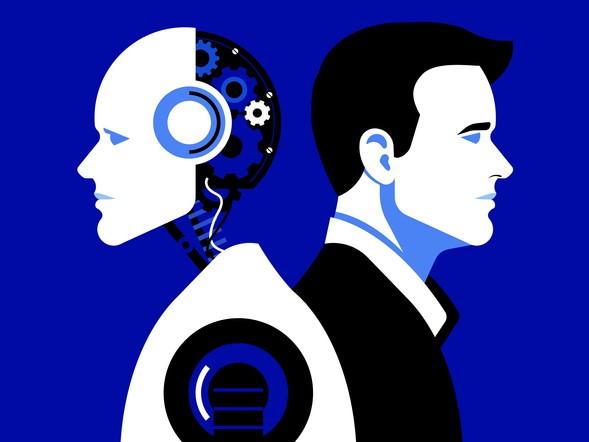For a long time, the focus of higher education has been to equip students with the technical and disciplinary skills required for the future job market. Today, that market is one dominated increasingly by AI and automation. However, as educators, we must acknowledge the importance of humanness in education. While technical proficiency is undoubtedly crucial, the ability to navigate the nuances of human interaction, empathy and ethical decision-making is equally vital.
We need to cultivate a generation that not only excels in harnessing AI but also retains and promotes the essential qualities that make us uniquely human.
- Eight tips for making teaching and learning more enjoyable for learners
- Transforming the classroom through experiential learning
- Making space for emotions in learning
I propose a series of pedagogical approaches that draw on the arts, in order to foster the human skills essential for students to thrive in the world of work and beyond.
Humanness is defined by a range of attributes: empathy, critical thinking, creativity, emotional intelligence and ethical reasoning. These qualities not only contribute to personal growth but also form the foundation for responsible and ethical behaviour. The recently published Future of Jobs Report by the World Economic Forum reflected this – the reskilling focus for 2023 highlighted a need for analytical thinking, creative thinking, resilience, flexibility and agility, curiosity and lifelong learning, and empathy and active listening.
But how do educators facilitate the development of these skills in practice? One way to do so is to adopt an experiential approach to education, and I believe this can be found in the arts.
Provide hands-on experience
Experiential education is a dynamic learning approach that emphasises hands-on, immersive experiences, helping to foster a deeper understanding of particular concepts. Unlike more traditional pedagogic methods, experiential education encourages active participation, critical thinking and problem-solving in real-world scenarios. Students engage directly with the subject matter, whether through internships, field trips, simulations or interactive projects. This approach enhances retention and application of knowledge by connecting theoretical concepts to practical situations and cultivates skills such as teamwork, adaptability and decision-making, preparing students for success in diverse professional and personal settings.
Embrace the arts
Look to art and arts education for ideas, because these subjects have traditionally implemented a more experiential approach to learning compared with business and management education, for example. They can serve as an entry way into experiential education, offering a unique platform for learning beyond traditional methods. Active participation in visual arts, music, theatre and literature helps students engage in a hands-on, sensory-rich exploration of diverse concepts.
Here are some practical examples of how different art disciplines can help your students grow as humans:
- Emotional intelligence through character exploration: By examining theatre and literature, students can immerse themselves in the lives of diverse characters, fostering empathy with and understanding of different perspectives. Analysing and embodying characters’ emotions can cultivate emotional intelligence, a vital soft skill in navigating workplace relationships.
- Collaboration in group art projects: The ability of art to engage its audience mentally, physically and emotionally might be one of its most powerful uses in education. John Dewey spoke of art’s capacity to create an experience and stated that art “does not operate in the dimension of corrective descriptive statement but in that of experience itself”. Creation in the visual arts often involves collaborative projects where individuals contribute to a shared masterpiece, encouraging teamwork, communication and collaborative skills.
- Critical thinking via art analysis: Studying paintings, sculptures or performances requires critical-thinking skills. Analysing artistic choices, symbolism and cultural contexts enhances students’ ability to think critically and make informed decisions, which is transferable to problem-solving in real-world scenarios.
- Empathy through storytelling: Narrative pedagogy taps into the power of empathy. Through relatable characters and real-life scenarios, students not only absorb information intellectually but also emotionally connect with the experiences of others. This fosters a deeper understanding of and empathy for diverse perspectives and situations.
- Morals and ethics through fairy tales: Exploring fairy tales and folklore not only provides perspective from a diverse range of cultures but also imparts moral lessons. Discussing the choices characters make and the consequences of their actions fosters a nuanced understanding of ethics. This encourages students to reflect on their own values and decision-making practices, nurturing a sense of responsibility and integrity.
- Self-awareness through the dramatic arts: The dramatic arts are a rich source of learning resources and are especially suited to experiential education. They serve as a tool to help move a learning experience from a lecture platform into a series of interactive, participative and doing phases, cultivating a deep sense of being.
Experiential pedagogy, as a foundational approach to human development, finds a natural partner in the arts, creating a unique platform where creativity, critical thinking and emotional intelligence converge. Instead of focusing entirely on technological skills, offer your students an opportunity to engage in an education that fosters empathy, cultural appreciation and a deeper connection to the world.
Some specific examples of arts-based activities educators could implement either within the curriculum or as extracurricular activity include:
- Ask students to analyse a short story, play, or film and discuss the characters’ motivations, emotions, and ethical dilemmas. Ask them to relate it to potential real-life workplace or interpersonal scenarios.
- Conduct an art analysis activity where students examine a painting or sculpture and critically analyse the artistic choices, symbolism and social and cultural context behind it. For example, The Son of Man by René Magritte. This surrealist piece of a man with an apple covering his face prompts reflection on identity. This can lead to discussions on self-awareness and authenticity and how these may or may not contribute to effective management.
- Assign a group visual art project such as a mural where students collaborate in creation, requiring empathy, teamwork, and managing and understanding different perspectives.
Lucy Gill-Simmen is vice-dean for education and student experience at Royal Holloway, University of London.
If you would like advice and insight from academics and university staff delivered direct to your inbox each week, sign up for the Campus newsletter.




comment